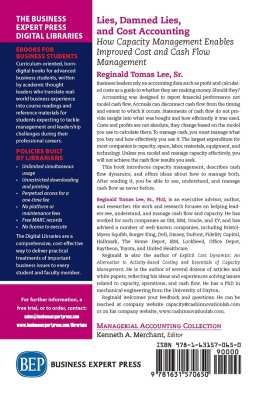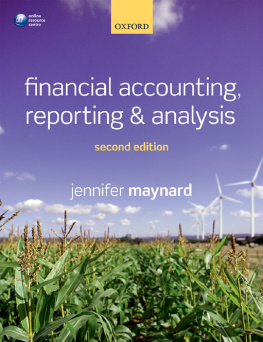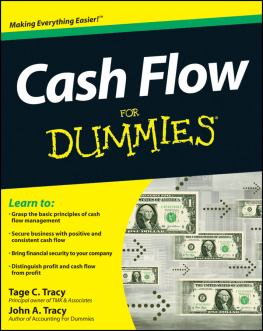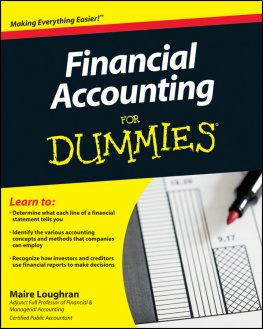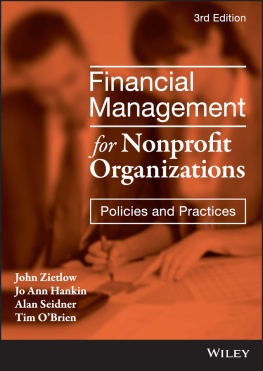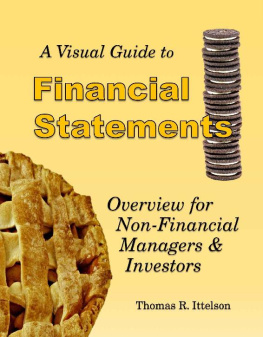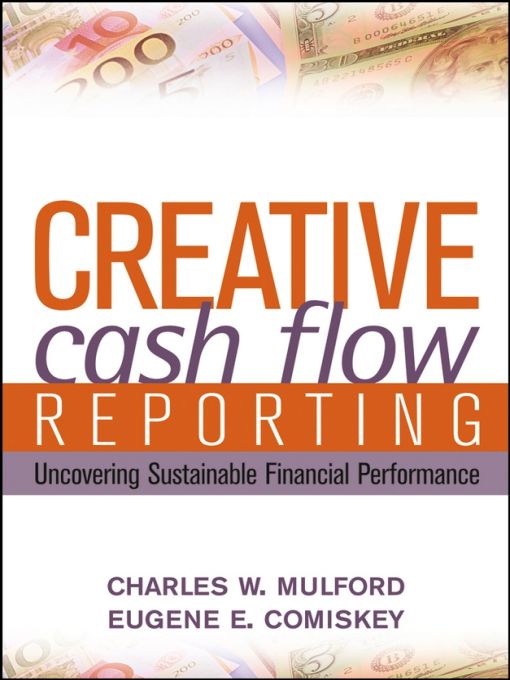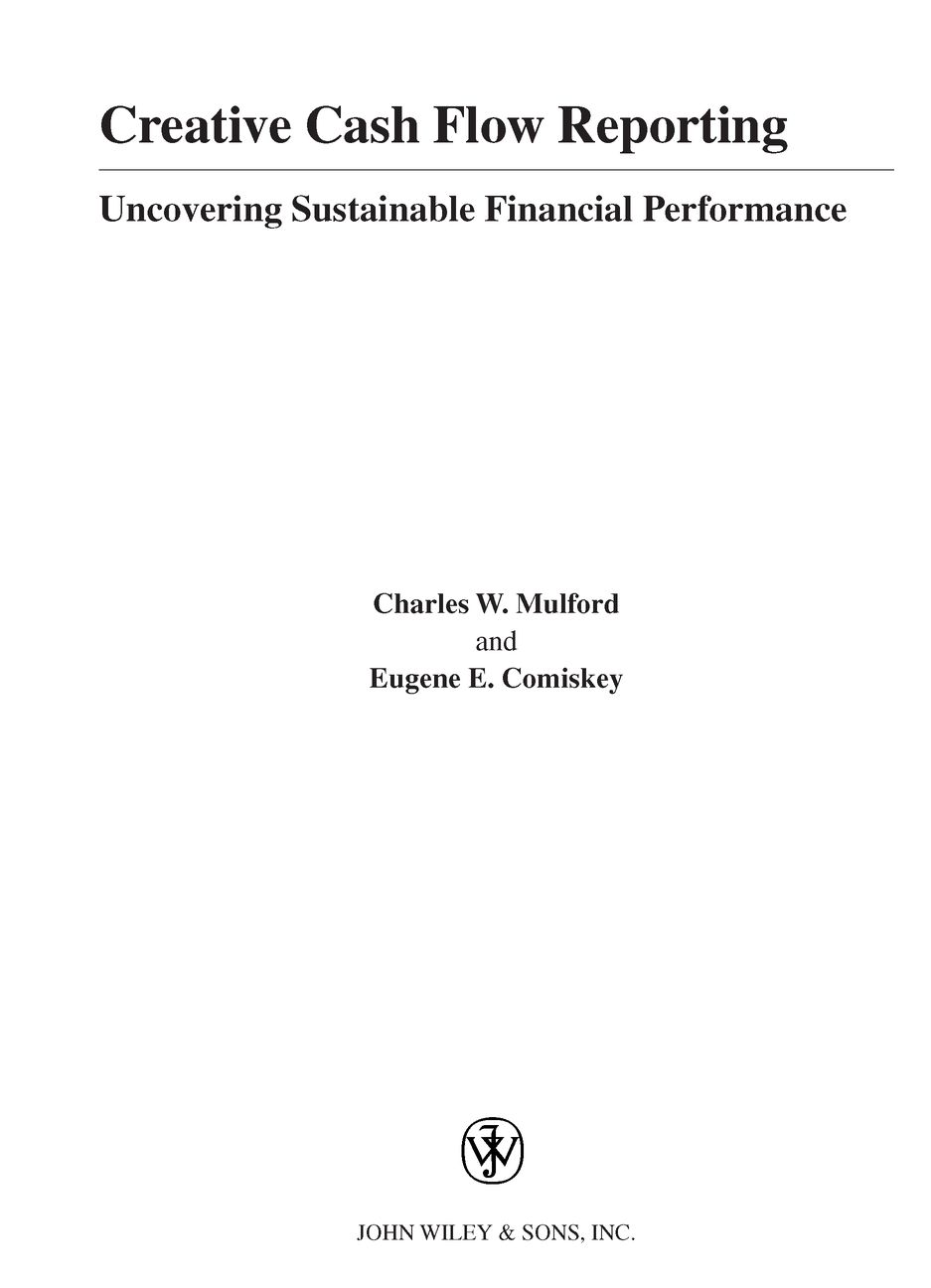Table of Contents
To our parents, Charles W. Mulford, Sr., and Geraldine L. Mulford, Joseph B. Comiskey, Jr., and Genevieve E. Comiskey, for a lifetime of support and guidance.
Foreword
Enron. Worldcom. Tyco. Healthsouth. Sunbeam. Cendant.
Just the mention of those names puts a chill and fear in the hearts of investors.
Each represents a recent accounting fraud that burned investors badly.
Shell-shocked investors began to feel helpless, wondering if investing in securities is a losers game. Is the game rigged? they wondered. If not, how do you win? Whats the holy grail of successful investing?
I believe that I have found the holy grail. The new book by Charles Mulford and Eugene Comiskey, Creative Cash Flow Reporting: Uncovering Sustainable Financial Performance , points us to it. Find a companys sustainable cash flow from operations. Use it as a means of finding the creators of real value and as a way of confirming reported earnings.
Case in point: Enron. In the year 2000, Enron reported cash flow from operations of $4.8 billion. In contrast, its legitimate, sustainable cash flow was -$3.1 billion. That same year, the company claimed that it generated about $1 billion in profits.
Mulford and Comiskey provide a simple and sensible approach for calculating sustainable cash flow from operations. They show how easily reported cash flow from operations can be inflated by the way items are classified among the operating, investing, and financing sections of the statement of cash flowstypically well within the boundaries of generally accepted accounting principles. Consider, for example, the effect of acquisitions on cash flow. Specifically, cash paid for working capital is shifted to the investment section rather than being shown as a reduction in cash flow from operations.
Many other books on financial analysis focus on techniques that improperly inflate profits by manipulating revenue or expenses. But none, however, points us precisely to the holy grail: sustainable cash flow from operations.
Read this book and begin your journey. This may be the most important book in your investment collection library.
Dr. Howard M. Schilit, CPA
Author, Financial Shenanigans:
How to Detect Accounting
Gimmicks and Fraud in
Financial Reports, and Founder,
CFRA (Center for Financial
Research & Analysis)
Preface
It is difficult to overstate the importance of cash flow to overall corporate financial health. Indeed, our fundamental concepts of credit quality and valuation are based on projections of cash flow. Typically these projections are of operating cash flow or a closely related metric, free cash flow, which is operating cash flow adjusted for capital expenditures. These measures of cash are viewed as sustainable and discretionary sources that can be used for such designated purposes as debt repayment, new investment, stock buybacks and dividends.
Many investors, burned by the trust they have placed in reported earnings in an era of questionable accounting, have turned their focus to cash flow as the only trustworthy measure of financial performance available. One might hear such statements as
Cash flow is real and not subject to the vagaries of GAAP or the whims of the accountants.
Its virtually impossible to manage cash flow.
Profit is an opinion. Cash is a fact.
Dividends are tangible cash, and therefore impossible to fake.
The balance in cash and the total change in cash from one period to the next are generally not prone to misstatement. These amounts are readily verifiable with banks and other institutions holding reported balances. Unfortunately, however, changes in the components of total cash flowthe operating, investing, and financing componentscan be reported in a misleading fashion. Typically, but not always, this is done within the boundaries of generally accepted accounting principles (GAAP) as the guidelines provide much flexibility. Increases in operating cash flow, denoting an improvement in financial performance, are offset with higher disbursements in the investing or financing sections. The net effect: With no difference in total cash flow, apparent operating performance is improved.
Creative Cash Flow Reporting: Uncovering Sustainable Financial Performance provides a guide for adjusting cash flow to remove misreported and misclassified amounts, yielding a more sustainable and meaningful measure of cash flow.
In an era of reduced trust in reported earnings, operating cash flow, properly adjusted, offers a useful means for identifying earnings-related reporting indiscretions.
Increases in earnings obtained through questionable means will not generate operating cash flow. Consider, for example, premature or fictitious revenue. Such reporting actions result in growing receivables but not cash. Also, steps taken to misstate inventory might boost gross profit and net income, but will not provide cash flow. Similar statements can be made about aggressive cost capitalization and other creative accounting acts. Earnings are boosted but operating cash flow or, more precisely, operating cash flow adjusted using steps described in the book, is not.
Creative Cash Flow Reporting demonstrates how to use adjusted operating cash flow in uncovering earnings that have been misreported using aggressive or fraudulent accounting practices.
Equities are purchased and loans are made based on the perceived ability of a company to generate cash. Cash flow analysis provides an effective look at the financial soul of a company. An important step in cash flow analysis is deciding whether current cash surpluses or shortfalls will continue. It is not unusual for companies to generate ample amounts of cash even as they slide toward extinction. In contrast, a cash shortfall may be an early sign of future success. To be effective, cash flow analysis must find the true meaning in reported cash results.
Creative Cash Flow Reporting provides an effective approach to cash flow analysis that focuses on the fundamental drivers of sustainable cash flow.
Beyond its primary objectives, the book includes certain special features. For example, it includes the results of a study designed to adjust the cash flow statements of the S&P 100 for the years 2000, 2001, and 2002. For many companies included in this sample, we found significant differences between reported and adjusted operating cash flow. Also, to maintain a contemporary and real-world feel, the books results are illustrated using hundreds of actual and recent company financial reports.
Creative Cash Flow Reporting was written for serious readers of financial statements, including equity analysts or investors, credit professionals, serious individual investors, professional money managers, and anyone interested in uncovering true sustainable cash flow performance.
Interested in more?
For insightful, cutting-edge reports on issues of financial reporting and analysis,
visit the Georgia Tech Financial Analysis Lab at:
www.mgt.gatech.edu/finlab
For professional, software-based solutions focused on cash-flow analysis,
visit Cash Flow Analytics, LLC at:
www.cashflowanalytics.com


